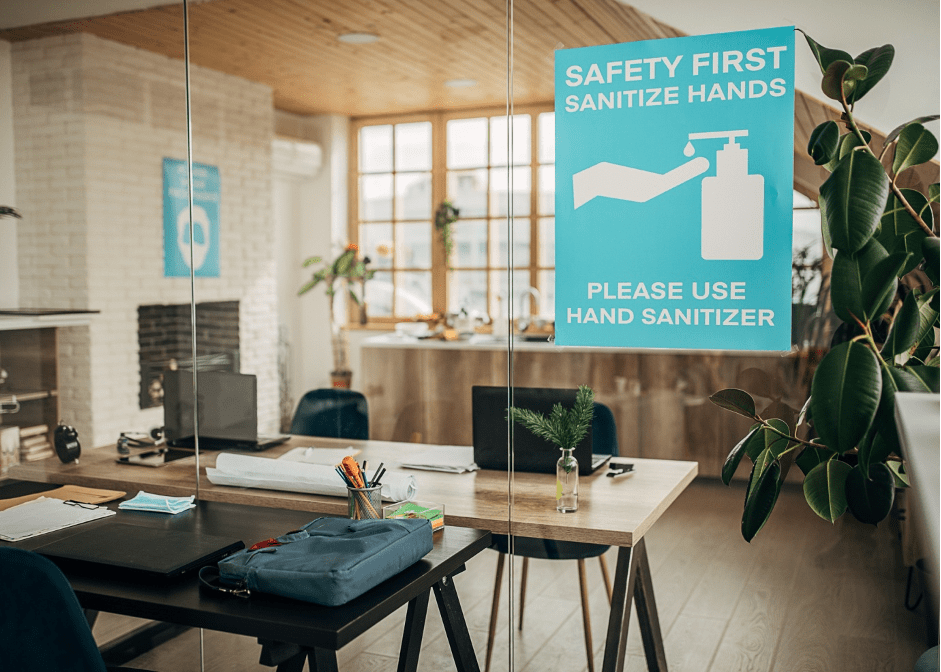COVID-19 has had caused significant implications to the office and workspace sectors, but the road to recovery is now in sight. Occupiers of office space and landlords who manage their buildings will be interested to learn how to respond to the recovery and how they can prepare themselves for workers to return to the office.
Simple steps to ensure a safe return to the office
As the government prepares for a relaxation of the COVID-19 restrictions, employers and landlords should also ensure that procedures are in place to welcome employees, customers and visitors back into the office and places of work. This may include the availability of COVID-19 testing, sustained and reliable access to cleaning supplies and PPE, measures to ensure a level of social distancing, frequent cleaning and best practice regulatory requirements concerning the spread of infection.
Businesses and office landlords may consider implementing multidisciplinary teams to help with the transition of bringing workers back the workplace. This may include dedicated management members who are responsible for implementing best practice guides across their respective business departments such as HR, Operations, Real Estate & Facilities, Finance and Procurement.
Health & Safety and Wellbeing
Office and work space occupiers and landlords should be prepared to make a conscious effort to reassure a discerning workforce that they are working in a safe environment. This could include displays of Health and Safety and wellness information, such as additional resources and literature to show how wellbeing is being maintained within the office or work place.
Business Requirements and Working Arrangements
Thanks to modern technology, many businesses have remained operational during lockdown through the use of Zoom, Teams and Skype meetings. However, some employers are concerned of the impact to productivity under this working arrangement and will be keen to bring their workers back to the office. However, many employees have noted benefits to remote working, such as an improved work life balance due to no commuting requirements and some reporting that home working enables them to be more productive. Many employees report that a balance between home working and being office based 2 to 3 days out of a 5 day work week would strike a nice balance. Employers who occupy office space and work premises should be mindful about bringing workers back to the office ‘full throttle’ and should opt to do this in a gradual manner. This could begin through employee rotation before gradually re-introducing more workers to the work place.
Reconfiguration and Facility Preparation
Occupiers of offices and work spaces can communicate the steps they have taken to ensure Health and Safety and wellbeing by implementing measures to change the physical environment to support social distancing. Physical assessments should first be conducted to prepare for the re-occupation of staff, where occupiers and property owners should communicate their plans throughout the process.
Continual Workplace Management
A reoccupation of office space and working environments should consist of continuous management, including frequent updates to employees and tenants in order to provide useful educational awareness of Health and Safety and wellbeing.
Upon re-occupying the office or workspace, employers and property owners should remain vigilant and respond quickly to unwelcome events. Procedures should be in place if there is a risk of exposure, with workers being fully aware of the office protocols in place should such an event occur, including the procedure that should be followed by employees who have been exposed to COVID outside of the workspace.
Communication is also a key park in ensuring a safe office space for employees to return to work. One of the key forms of communication in this respect is ‘feedback’. Employees and occupiers of office space should be encouraged to give feedback on management and landlords efforts to ensure a safe working environment. Employers and property owners should take any criticisms seriously and aim to demonstrate good practice in the area of Health and Safety and wellbeing.
Finally, financial consideration should be taken into account when implementing the procedures outlined throughout this article. Property owners and office space occupiers will need to consider the additional financial commitment involved in implementing Health and Safety procedures such as hand sanitising stations, testing, PPE and the reconfiguration of workspace furniture and office remodelling to aid with social distancing measures.
If you are an office occupier or property owner who is considering re-modelling or retrofitting your office or workspace, please feel free to contact us, where we will be happy to discuss your requirements.
Image Credit: Knight Frank
